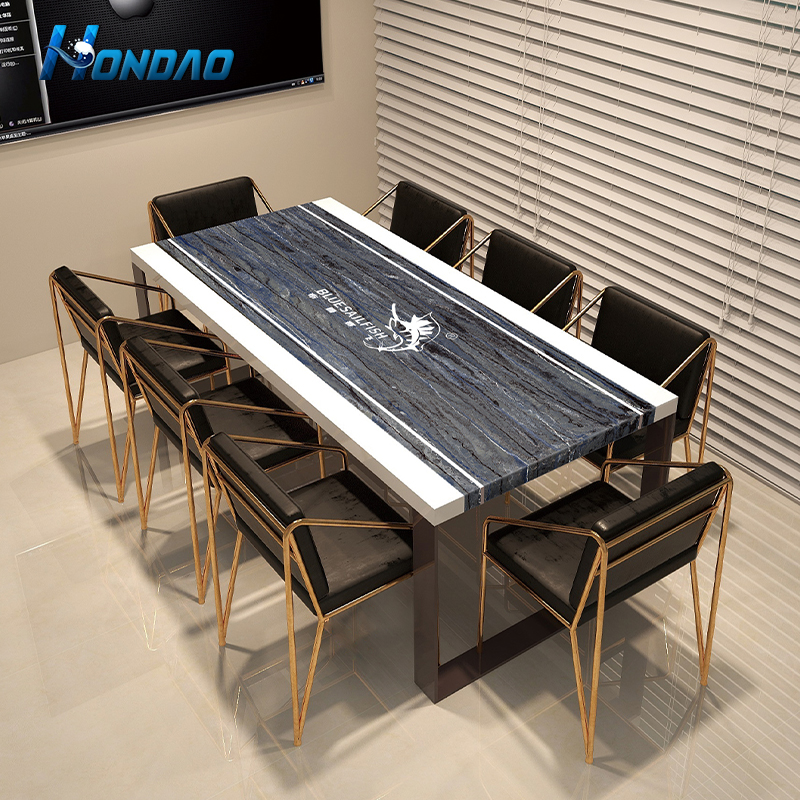Solid Surface Countertop Basics to Know Before You Buy
Date of Release: 2023-01-13
Solid surface countertops have been around for over 50 years now and are a mainstay in kitchens and bathrooms. What might have once been considered trendy is now so established that few countertop materials, except for quartz, have managed to achieve the same status.
Solid surface is a perfect mid-range countertop material. Buyers not interested in laminate but still looking for an affordable countertop often gravitate to solid surface material. It is one of the few counter materials that a homeowner can resurface with just an orbital sander.
While visually solid surface lacks the depth of real stone or even quartz, it does resemble stone far more than laminate does. Solid surface is where a lot of countertop buyers comfortably end up after carefully considering its high and low points compared to other materials.
Pros
Nearly non-porous;
Homogeneous or solid through-out;
Easy to buff out scratches.
Cons
Soft, scratchable;
Deformed by high heat;
Difficult for DIYers to fabricate.

Solid Surface Material: Stable and Homogeneous
Solid surface materials began with DuPont's Corian. The idea behind its invention was to have a surface that looked reasonably like natural stone, but unlike stone, would be non-porous. When you slice granite open, you will see a wild, chaotic conglomeration of particles forming the slab. While this is beautiful, it offers multiple avenues for cracking and breaking.
The word solid in solid-surface reinforces the idea that this is a stable base, unlike bouncy laminates which are mounted on medium-density fiberboard.
But the term solid has another meaning. Dupont's true intent was to create a surface that was the same from top to bottom, a homogeneous product. This homogeneity is key in the high-abuse environment of a kitchen. With this, there are no layers of laminates that can de-laminate.
A cross-section of solid surface countertop shows that you can keep delving deeper into it and still get the same product. This is essential if you need to repair deep chips and scratches.

Tip
Solid surface's homogeneous nature is sometimes equated with through-body porcelain tile: a type of tile that is made of the same material throughout, from top to bottom. This type of tile is best for high-traffic areas since this quality helps to hide scratches.
Pros
· Nearly Non-Porous: No surface is completely non-porous, but tile, quartz, and solid surface come as close to being non-porous as any countertop material. Solid surface's extremely low porosity keeps bacteria away, promoting a cleaner and more sanitary countertop.
· Homogeneous: Unlike laminate or ceramic tile, solid surface's material goes all the way through, from top to bottom. As a result, it visually fares better after impact than a multi-layered product like laminate.
· Easy to Repair: Solid surface will scratch if you cut on it. But with an orbital sander and fine grain sandpaper, even the homeowner can sand down scratches.
Cons
· Soft: Homeowners who have solid surface countertops should be extra careful to use cutting boards, as solid surface is relatively soft and can be scratched by knives and sharp utensils.
· Heat Deformation: Solid surface can hold up against boiling water's temperature of 212 F. But some solid surfaces will begin to deform at temperatures not much higher than that (250 F). This means that hot, dry pans (such as a frying pan, which is typically hotter than hot) and wet pans (such as a pot of pasta with boiling water) should not be placed on a solid surface counter.
· DIY-Difficult: While easier to work with than natural stone or quartz countertops, solid surface material still isn't easy for most do-it-yourselfers to work with.

Tip
If resale value is a concern, stone or quartz would be better options.
Solid Surface vs. Other Countertop Materials
Cooks are restless, always searching for the perfect countertop material. The stainless steel counters of restaurant kitchens are highly valued by professionals but are not cost-effective or practical in residential kitchens. Solid surface is affordable by a majority of homeowners.
Others such as wood and ceramic tile have limitations. Wood is porous, hard to clean, and can develop a slimy feel. Ceramic tile, on an individual basis, is hard and non-porous. But when installed in numbers, grouted seams make food preparation more difficult. Except for invisibly welded seams, solid surface is smooth all the way across.
Expensive and prone to cracking, even the popular granite and marble options are far from perfect. Solid surface will never experience the same through-body cracks that sometimes affect natural stone.
Laminate surfaces such as Formica are a sandwich of paper or fabric impregnated with resin, all of that glued onto particleboard. Laminate easily chips and its appearance lacks depth.
FAQ
· What are important factors to consider before buying a countertop?
Factors to look at when selecting a new countertop should include price, durability, heat resistance, ease of cleaning, required maintenance, and aesthetics.
· Is a solid surface countertop a good investment?
A solid surface countertop is easy to maintain and looks timeless. Their most significant value is they're nearly as durable as granite, marble, or quartz.
· What are the advantages of a solid surface countertop?
Solid surface countertops have many advantages. They have seamless joints and are not porous, resisting stains and bacteria. They're hard, impact-resistant, and require very little maintenance. They're easy to clean, and scratches can easily be sanded and buffed out.
· What are the disadvantages of a solid surface countertop?
Some disadvantages of solid surface countertops are that they are not heat- or chemical-resistant, meaning they can get discolored, damaged, or scorched. It is softer than granite and can get scratched. Solid surface countertops don't detract from the resale value of a house, but they don't add any extra value either.




















